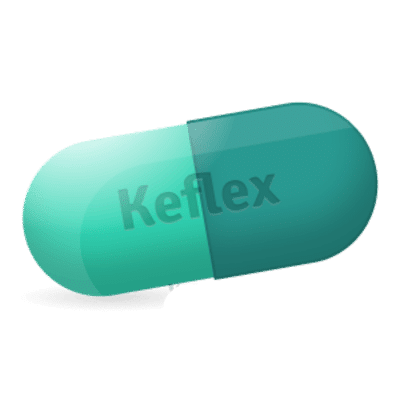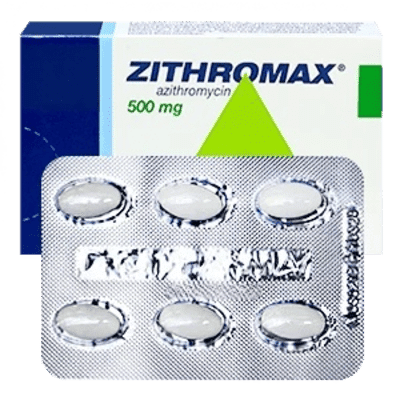I took the drug as prescribed by my doctor to treat bronchitis. I felt the effect after just 24 hours – my cough became softer and my temperature dropped. The only downside was that I felt slight discomfort in my stomach during the first few days, but it quickly passed.

Keflex
Active ingredients: Cephalexin- Quality products
- Support 24/7
- Fast delivery
What is it?
Keflex is a first-generation cephalosporin antibiotic whose active ingredient is cephalexin. It is intended for the treatment of various bacterial infections, including respiratory, skin, urinary tract, bone and joint infections. Keflex acts by disrupting the synthesis of bacterial cell walls, which leads to their death. The drug is available in the form of capsules, tablets and suspensions for oral use. The dosage and duration of treatment depend on the type and severity of the infection, as well as on the individual characteristics of the patient. It is important to strictly follow the doctors recommendations and not stop taking the drug prematurely, even if symptoms have improved, to prevent the development of bacterial resistance to antibiotics.
Composition
Keflex contains the active substance cephalexin, which belongs to the group of cephalosporin antibiotics. The auxiliary components of the drug may vary depending on the form of release, but usually include substances that ensure stability and ease of administration.
- Cephalexin is an active component with an antimicrobial effect.
- Gelatin is used to create a capsule shell (in the case of capsules).
- Cellulose and starch are auxiliary substances that improve the structure of the drug.
- Magnesium stearate is a component that prevents caking of powder inside capsules or tablets.
- Flavorings and sweeteners (in suspension) - to improve taste.
The composition is important not only for the effectiveness of the drug, but also for preventing allergic reactions in patients with hypersensitivity to certain substances. Before use, be sure to read the full composition indicated in the instructions.
How to use?
Keflex should be taken as prescribed by your doctor. Usually, the drug is taken orally with plenty of water. Depending on the form of release and diagnosis, the dosage and regimen may vary.
- For adults, the standard dose is 250-500 mg every 6 hours or 500 mg every 12 hours. In severe cases, the dosage may be increased.
- For children, the dosage is calculated based on body weight - usually 25-50 mg per kilogram of weight per day, divided into several doses.
- The duration of treatment is usually from 7 to 14 days, but the exact period is determined by the doctor depending on the nature and severity of the infection.
- The suspension should be shaken thoroughly before each use to ensure uniform distribution of the active substance.
The drug can be taken regardless of food intake, but if gastrointestinal disorders occur, it is better to take it after meals. Never change the dosage on your own or stop the course, even if you feel better.
How does it work?
Keflex acts as a bactericidal antibiotic, i.e. it kills bacteria that cause infectious diseases. Its active substance, cephalexin, disrupts the structure of the bacterial cell wall, which is vital for their existence.
The drug effectively destroys gram-positive and some gram-negative bacteria. This is achieved by inhibiting a process called the synthesis of peptidoglycan, the main component of the cell wall. Without this element, bacteria lose strength, break down and die.
Keflex begins to work quickly, which helps reduce the severity of infection symptoms such as pain, inflammation and high temperature. However, it is important to remember that the drug is only effective against bacterial infections and is not suitable for the treatment of viral diseases such as influenza or acute respiratory viral infections.
Indications
Keflex is used to treat infections caused by bacteria sensitive to cephalexin. This antibiotic is prescribed for various bacterial diseases, both acute and chronic.
- Respiratory tract infections - bronchitis, pharyngitis, tonsillitis, pneumonia.
- Urinary tract infections - cystitis, pyelonephritis, urethritis.
- Skin and soft tissue infections - boils, abscesses, impetigo, wound infections.
- Bone and joint infections - osteomyelitis, arthritis.
- Ear, nose and throat infections - otitis, sinusitis.
Keflex can be recommended as an alternative for allergies to penicillin antibiotics, if the bacteria are resistant to other drugs. However, for effective treatment it is important to conduct a bacteriological analysis to determine the sensitivity of the pathogen to the drug.
Contraindications
Keflex should not be used in the presence of certain conditions and diseases that may increase the risk of complications. Before starting treatment, it is important to make sure that the patient has no contraindications.
- Allergy to cephalexin or other cephalosporin antibiotics.
- A history of severe allergic reaction to penicillins (cross-sensitivity is possible).
- Severe renal failure, if dosage adjustment is not possible.
- Intolerance to the auxiliary components of the drug, including lactose (if it contains).
- Age under 6 months (for capsules and tablets) - for children of this age, it is recommended to use a suspension.
The drug should be used with caution in patients with chronic liver or kidney disease, as well as in individuals with a history of allergic reactions. If you have any doubts or are taking other medications, be sure to tell your doctor.
Side effects
Like any other antibiotic, Keflex can cause side effects. Most of them go away on their own and do not require discontinuing the drug, but in some cases, corrective measures may be required.
- Gastrointestinal disorders: nausea, vomiting, diarrhea, abdominal pain.
- Allergic reactions: skin rash, itching, urticaria, in rare cases - anaphylaxis.
- Changes in blood composition: slight changes in the level of leukocytes or platelets are possible.
- Candidiasis: as a side effect of long-term use, especially in women.
- Rarely: headache, dizziness, increased fatigue.
If serious reactions occur, such as severe allergies, persistent diarrhea with blood or mucus, you must immediately consult a doctor. To minimize the risk of side effects, it is important to strictly follow the dosage recommendations and regimen.
Frequently asked questions
Keflex Reviews and Experiences
Used Keflex to treat a skin infection. The result exceeded expectations - the inflammation quickly subsided, and the wound healed without complications. Convenient release form and clear recommendations from the doctor helped to avoid problems with taking
Keflex helped me cope with a urinary tract infection very well. After two days, the symptoms began to go away, and after a week I was completely cured. I did not notice any side effects, but I strictly followed the doctors instructions.









